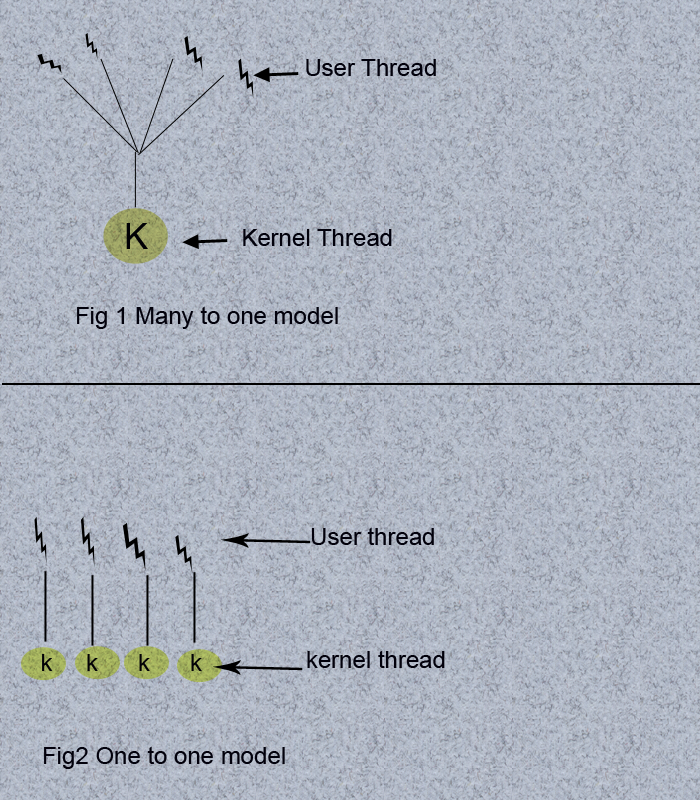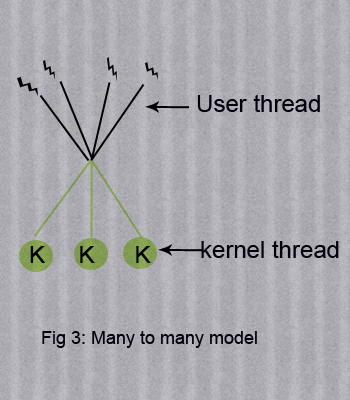Multithreaded Process: Benefits & Models.
Hello Friends, In this blog post I am going to explain to you the benefits of the multithreaded process and the types of its model.
In this blog post, we are going to see What is the multithreaded process? What are the multithreading models? What is the difference between a single-threaded and multithreaded process? What are the advantages of using multithreading instead of multiple processes?
What is a multithreaded process?
It is the ability to run multiple threads of a program concurrently. This is the actual ability of a CPU(central processing unit).
In a computer architecture environment, multiple threads of programs can be run in parallel supported by the Operating system.
What are the multithreading models?
As we know there are two types of threads in the computer architecture, one is the user thread and the other is the kernel thread.
User threads are supported above the kernel thread without any kernel support. Users’ threads are the threads that are put by the application program into the program.
And kernel threads are supported within the OS itself. But in the case of specific implementation user threads should be mapped with kernel threads.
And for doing this we need some models which provide the strategies to map the user threads with kernel threads.
What is the difference between a single-threaded and multithreaded process?
In a single-threaded process, the execution of the process occurs in a sequence.
In the multithreaded process, the execution of several parts of a program can be executed parallelly or at the same time.
What are the advantages of using multithreading instead of multiple processes?
We can run multiple threads concurrently on various CPUs in the multiprocessor environment.
This means multiple threads run much faster in a multiprocessor area than in a uniprocessor.
Multiple threads also run faster than multiple processes as threads require fewer resources and create less overhead.
Benefits: The benefits of multithreaded programming can be broken into the following categories –
Resource sharing: By default, threads share the memory and the resources of the process to which they belong. The benefit of code sharing is that it allows an application to have several different threads of activity all within the same address space.
Responsiveness: multithreading an interactive application may allow a program to continue running even if part of it is blocked or is performing a lengthy operation, thereby increasing responsiveness to the user.
Economy: It is costly to allocate memory and resources for process creation. Alternatively, it is more economical to create and context switch threads because threads share resources of the process to which they belong.
Utilization of multiprocessor architecture: The benefits of multithreading can be increased in a multiprocessor architecture, where each thread may be running in parallel on a different processor.
Types of model / Multithreading models in OS
Many systems provide support for both user and kernel threads, resulting in different multithreading models. There are the following types of multithreading implementation –
Many to one model:
The many-to-one model maps many user-level threads to one kernel thread as shown in Fig 1 thread management is done in userspace, so it is efficient, but the entire process will block if a thread makes a blocking system call.
Also, multiple threads are unable to run in parallel on a multiprocessor, because only one thread can access the kernel at a time. For example, green threads- a thread library available for Solaris 2- use this model.

One-to-one model:
The one-to-one model maps each user thread to a kernel. It provides more concurrency than the many-to-one model by allowing another thread to run when a thread makes a blocking system call.
It also allows multiple threads to run in parallel on multiprocessors. The drawback to this model is that creating a user a user thread requires creating the corresponding kernel thread.
Because the overhead of creating kernel threads can burden the performance of an application, implementation of this model restricts the number of threads supported by the system.
For example, Windows NT, Windows 2000, and OS/2 implement this model.
Many-to-many models:
The many-to-many model multiplexes many user-level threads to a smaller or equal number of kernel threads.
The number of kernel threads may be specific to either a particular application or a particular machine.
Whereas the many many to the model allow the developer to create as many user threads as he wishes, true concurrency is not gained because the kernel can schedule only one thread at a time.

The one-to-one model allows greater concurrency, but the developer has to be careful not to create so many threads within an application. The many-to-many models do not suffer from these drawbacks.
Developers can create as many user threads as required, and the corresponding kernel threads can run in parallel on a multiprocessor. For example, salaries 2 IRI X and Tru64 UNIX implement this model.
You can also go through a few more amazing blog links below related to operating systems:
disk scheduling क्या होती है…
FAT32 Advantages and Disadvantages…
Overlay advantages and disadvantages in programs…
What is the use of Cache Memory…
What is Linker? Why is it required?…
types Of File Operations…
What are the file Organisation and its types…
Dijkstra: Bankers Algorithm For Deadlock Avoidance…
What is a thread in the operating system with an example…
Cache Memory In Hindi…
Linker In Hindi…
What Are Multithreading Models in Hindi…
Dynamic Storage Problem In OS In Hindi…
Process states in the Operating system in Hindi…
FAT32 Advantages And Disadvantages In Hindi…
Critical Section Problem With a Simple Example…
Critical Section Problem In OS In Hindi…
Dijkstra Algorithm In Hindi|Banker’s Algorithm In Hindi…
What Is Dynamic Storage Problem…
What are the Fork and Exec system calls…
Multithreaded Process: Benefits & Models…
The Process States In Operating System…
Conclusion:
Using this blog we have gone through the study of multithreaded processes and their benefits and models. Here we explored the multithreaded process. What are the multithreading models? What is the difference between a single-threaded and multithreaded process? What are the advantages of using multithreading instead of multiple processes?
In the case of any queries, you can write to us at a5theorys@gmail.com we will get back to you ASAP.
Hope! you would have enjoyed this post about multithreaded process benefits and types of multithreaded process models.
Please feel free to give your important feedback in the comment section below.
Have a great time! Sayonara!


